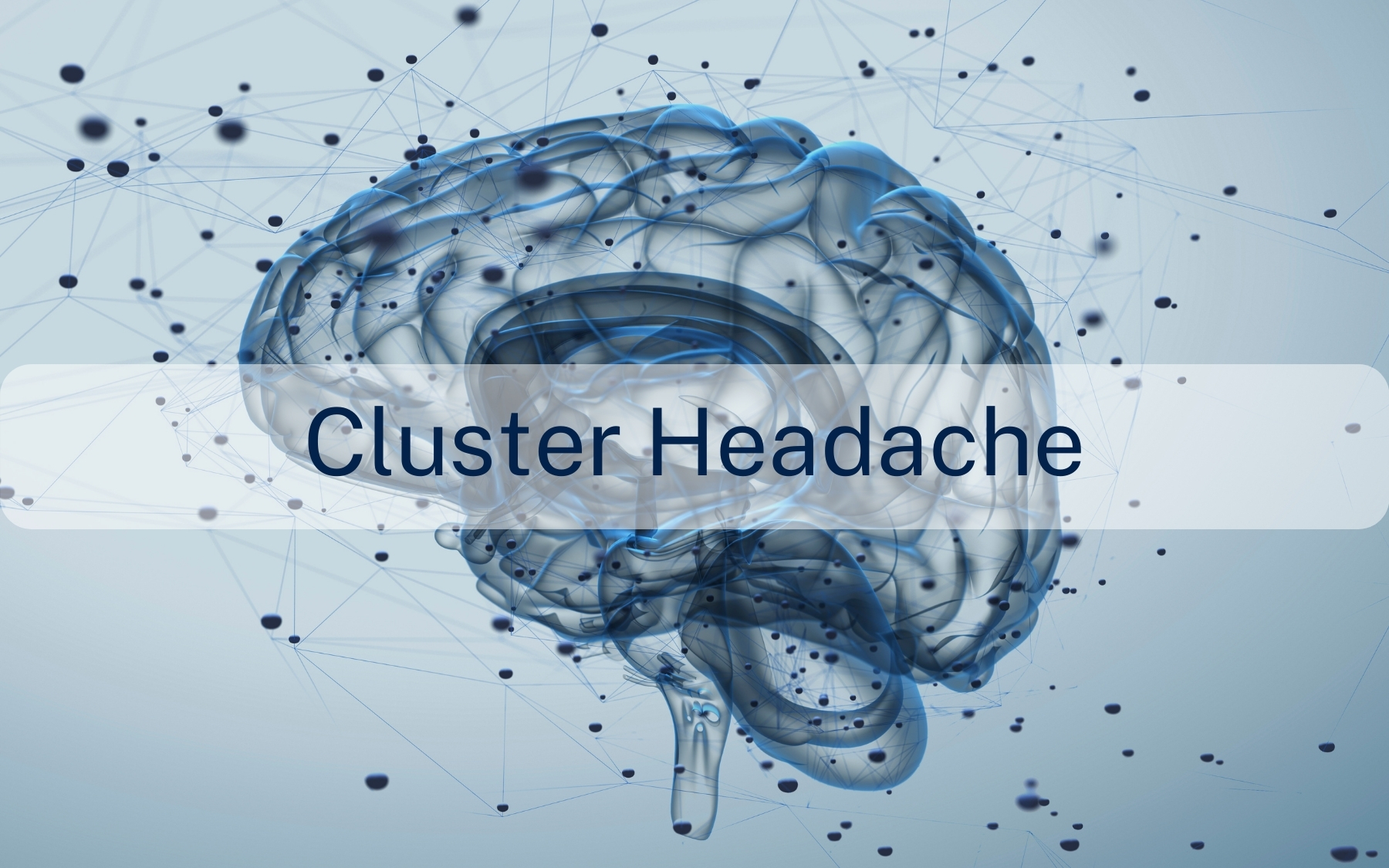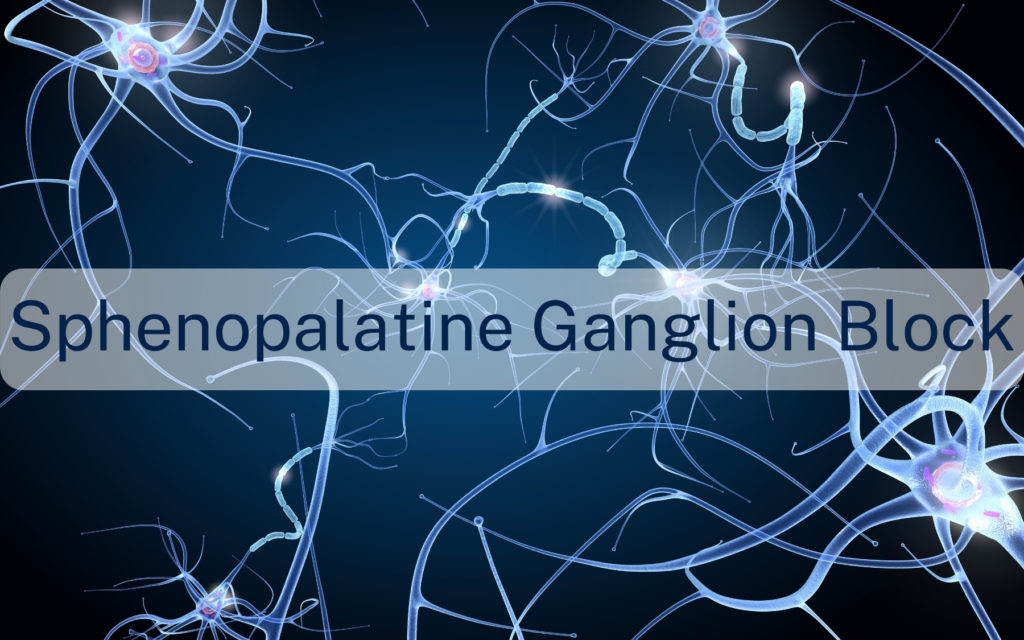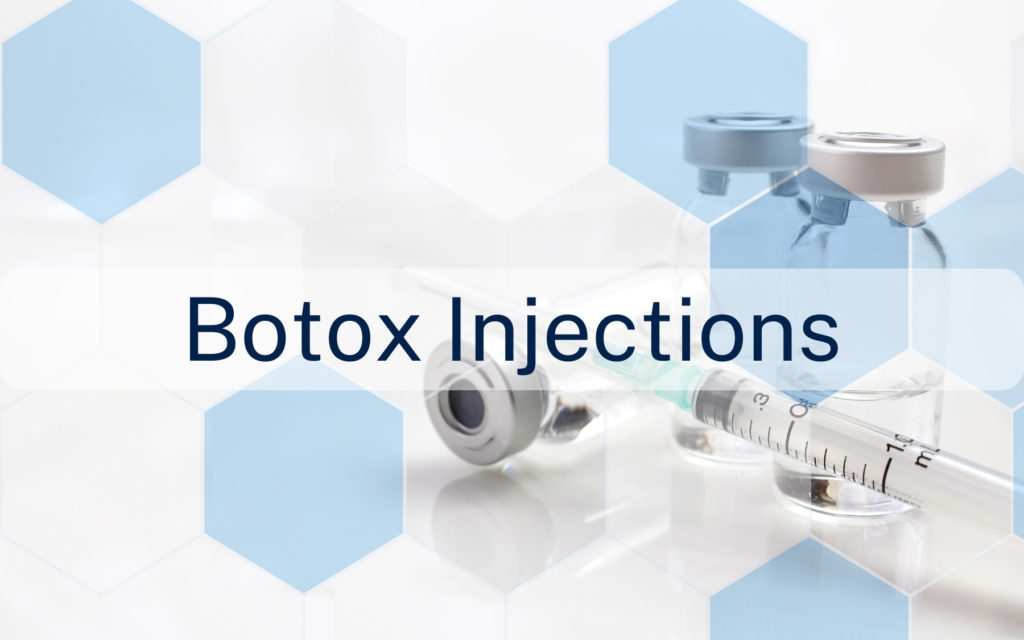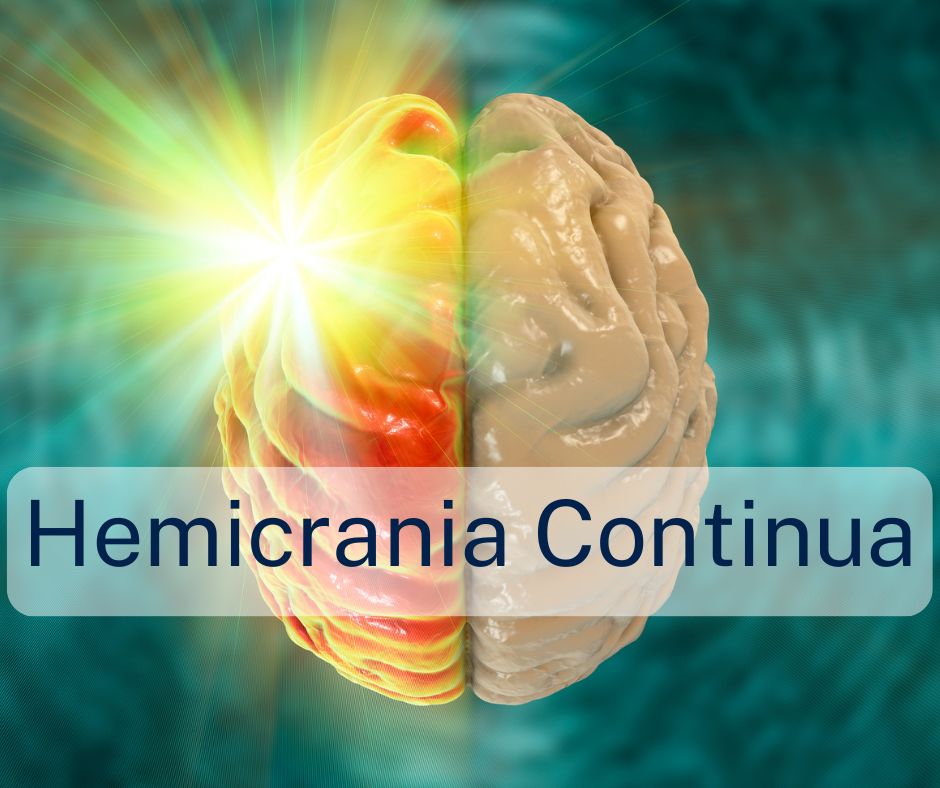What is a Cluster Headache?
Cluster headache is a rare type of headache that affects 1 to 2 people in every 1,000. It is characterised by excruciating attacks of pain in one side of the head and occur in cyclical patterns or ‘cluster periods’, which can last from weeks to months. This condition is more common in men, and is likely to start when a person is 30 to 40 years old. It can occur in younger adults and children but this is less common.
What causes Cluster Headaches?
The exact cause of cluster headache is unknown. There is some data suggesting that the condition may be genetic and indeed some cases run in families. Research has found that approximately 1 in 20 people with cluster headache have a family member who also has the condition. The main area involved in cluster headache is the hypothalamus which is the body clock and seems to account for the cyclical pattern and the seasonal occurrence of the cluster bout, along with some of the symptoms of the attacks.
Symptoms of a Cluster Headache
Defined as one of the most painful conditions known to mankind. The pain, which is described as sharp and piercing, often starts suddenly with no warning signs. The pain is usually centred on one side of the head, either around one eye, the temple or the forehead. Some patients find that the pain always appears on the same side, others find that the side can vary from time to time. Other symptoms include;
- A red and watering eye
- Drooping and swelling of one eyelid
- A smaller pupil in one eye
- A blocked or runny nostril
- Pain down the neck and shoulders
- A sweaty face
- Extreme restlessness and agitation
During a cluster period, attacks can last anywhere between 15 minutes and 3 hours, and may occur between one to eight times every day. In approximately 80% of people with cluster headache, the cluster period lasts from four to twelve weeks, once a year, normally in the Spring or Autumn. The remaining 20% of people have ‘chronic cluster headache’ as they do not have significant remissions between cluster attacks.
Diagnosis of Cluster Headaches
Cluster headache has a distinct pattern of attacks which can aid diagnosis. Unfortunately, there is no specific test to diagnose this type of headache. Instead, your consultant will ask you about the severity of the pain, the frequency of headaches and associated symptoms. To rule out other conditions the consultant may request a CT scan and MRI scan. They may also do a neurology exam to test your brain function as this may reveal signs of cluster headache. The attacks usually last between 15 minutes up to three hours. In some cases, people can experience 1-8 attacks a day. There is a pattern with these attacks; the headaches will usually occur daily for around 4-12 weeks before they subside. Remission (a symptom free period) can last for months or even years before the headaches return.
Potential Treatment Options
Cluster headache is not life threatening, however they can be extremely painful and affect your quality of life. Over the counter medications are generally not effective in treating cluster headaches as they do not work fast enough, this means that paracetamol and ibuprofen will usually not work. The treatment is divided in abortive and preventive:
- Abortive treatments:
- Subcutaneous injections of Sumatriptan 6mg: is the abortive treatment of choice to stop cluster headache pain.
- High flow oxygen with a non-rebreather mask is safe and effective in aborting cluster attacks.
- Triptans nasal spray can be effective but less than sumatriptan injections.
- Preventive treatments:
- Verapamil is a blood pressure tablet also used for the treatment of certain irregular heart beat conditions. It is effective in the prevention of cluster headache.
- Greater occipital nerve blocks (GONBs) with corticosteroids and local anaesthetic injected near the occipital nerve at the back of the head on the side of the pain can be very effective in the majority of patients.
- Multiple cranial nerve blocks: can be effective if the GONBs do not work.
- Lithium, topiramate, melatonin have some evidence of efficacy.
- Sodium valproate, pizotifen, gabapentin have some sparse evidence.
Neuromodulation approaches:
Dr Lambru and the medical team at the London Headache & Facial Pain Clinic specialises in these treatment modalities:
- Vagus nerve stimulation. Low-voltage electrical currents stimulate the vagal nerve in your neck. This can reduce pain severity and sometimes also the number of cluster headache.
- Sphenopalatine ganglion pulsed-radiofrequency.
- Occipital nerve stimulation
- Deep nerve stimulation
This article is intended to inform and give insight but not treat, diagnose or replace the advice of a doctor. Always seek medical advice with any questions regarding a medical condition.






0 Comments